Is it safe to eat roadkill? Consider these 9 essential things (+opinion from a hunter)
Daily, thousands of animals fall victim to drivers (Roadkills). Why not eat these animals? Can wildlife accidents be a good meal?
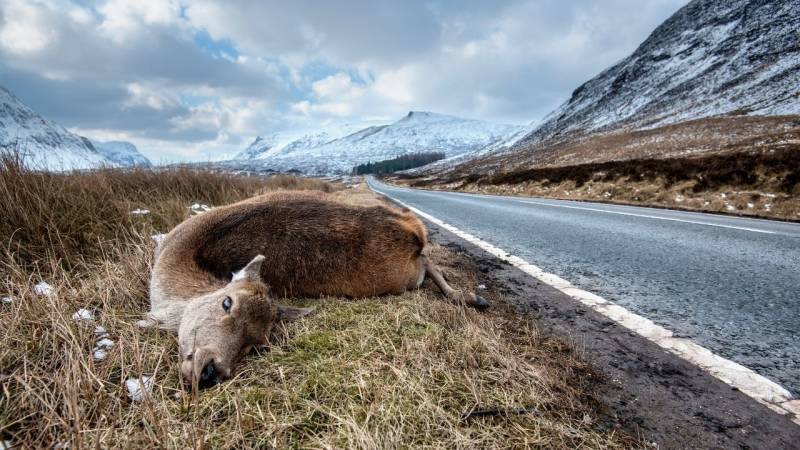

From Martin Gebhardt. Check out my “About me” page.
👉 The key facts from this guide
- The decision of whether a killed animal is edible depends on various factors, including the time of death, the condition of the animal's body, and legal regulations.
- It is important to thoroughly examine the animal before taking it with you. This includes checking the animal's eyes, skin, blood, and meat.
- In Germany, it is illegal to take killed animals with you and can be punished as poaching.
- There is a risk of poisoning yourself by consuming killed animals if the animal is not thoroughly examined and the meat is not well cooked.
- Despite the risks and legal restrictions, some argue that eating killed animals can be ethically acceptable and even meaningful, as these animals have lived a natural life and were not exposed to the conditions of industrial farming.
Daily, thousands of animals fall victim to drivers – so-called roadkill.
And I ask myself: Why can't I eat these animals? They were alive and living happily in the forest just a short time ago.
Are roadkill animals a good meal?
Whether it's safe or not to eat wild animals that have been hit by a car depends on the timing, legal requirements, and condition of the animal's body. A general statement cannot be made, but freshly hit wild animals may be edible. In addition, local laws must be observed, and a visual examination must be carried out.
Of course, these are just the basics.
Let's take a closer look at what you can do with roadkill and whether it will be your next dinner.
How to determine if roadkill is edible
I often wonder if I could pack up animals that have been hit by a car, like deer or wild boar.
At home, I'll break it down and eat it. After all, wild game is pricier than mass-produced chicken in many areas of the world.
In addition, animals in the forest live a happier life than their counterparts in cramped stables.
In short, roadkill is free and good food.
Rüdiger Nehberg even ate a rabbit that was hit by a car on his trip through Germany.
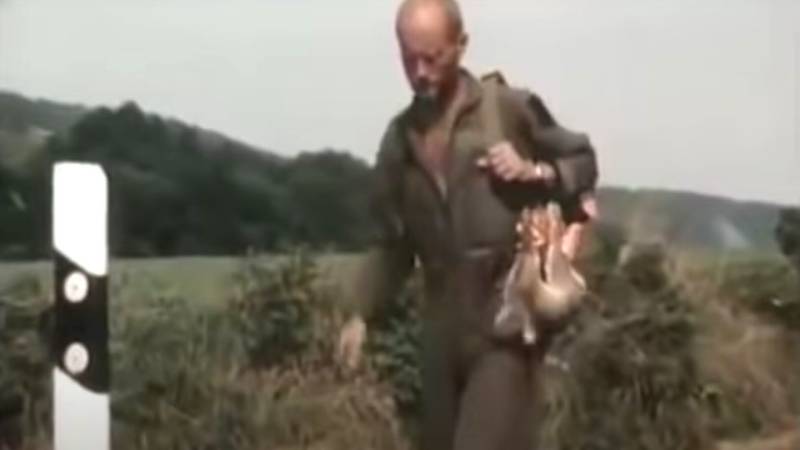
However, there are precautions you should take before taking the wild animal with you.
You will now find 9 questions that you should ask yourself before taking a roadkill animal with you.

For hunting and legal facts, I asked a trained hunter for help. Tobias Wirtz holds a hunting license and runs a ranger school in the Palatinate. On his Instagram account and his website rangerschule-pfalz.de you will find more information about him.
1. How long has the wild animal been dead?
You should never take a dead wild animal with you without examining it.
Depending on the climate and time of year, a dead animal can spoil within 30 minutes. Imagine a small wild animal, like a dead hare, lying in the sun for an hour at 35 degrees Celsius.
In that case, the meat is inedible. Even cooking won't help anymore. The outside temperature always has an influence on the meat and its ripeness.
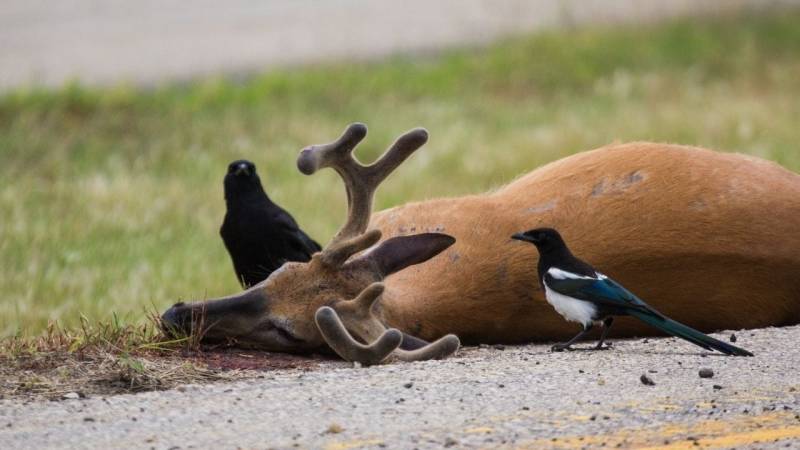
But even a wild animal that is killed or dies in winter must be gutted within 30 minutes (preferably even faster). This is important because from this period on (30 to 40 minutes), the natural stomach and intestinal barrier collapses.
Then there is a risk that bacteria from the stomach or intestines will enter the muscles.
If you accidentally hit an animal or witnessed an accident, you can examine the body more closely and ask further questions.
2. Do the eyes look clear or cloudy?
If you didn't hit the deer or wild boar yourself, take a look at its eyes.
If the eyes are clear, the animal hasn't been dead for long. If they're cloudy and opaque, stay away from the animal. It's probably been dead there for several hours.
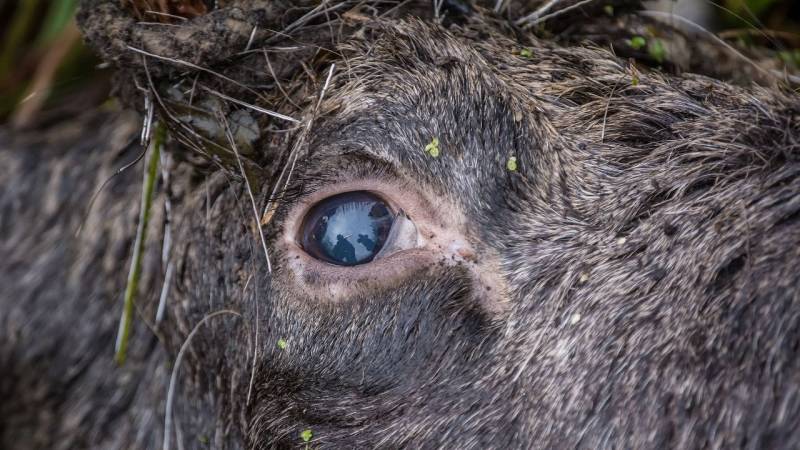
3. Is the skin still soft, or has rigor mortis set in?
Rigor mortis sets in differently depending on the species and environment.
With a pig, hunters say it occurs after about 4 to 18 hours, and with a chicken after about 2 to 4 hours.
It's important that the skin can still move. Pinch it, push the skin around. It's effortless with freshly killed animals.
If you notice stiff skin, stay away from it. With animals in rigor mortis, the skin is firmly attached to the muscle.
And if the fur comes off the skin, the wild animal has been dead even longer and is inedible.
4. Do the wild animal smell bad?
Even if the wild animal looks perfectly edible at first glance, trust your nose. If it smells rotten and rancid, move on.
You can particularly smell this odor at body openings such as the mouth. Corpse smell = unfit for consumption.
5. Are there parasites and insects on the animal's skin?
Many wild animals have fleas. And you can take advantage of that. Because fleas leave when their host dies.
Do you notice fleas? Then you can be sure that the blood of the deer, roe deer or wild boar is still warm.
It's different with fly larvae. If you see them on the animal, especially around the orifices, the animal is off-limits.
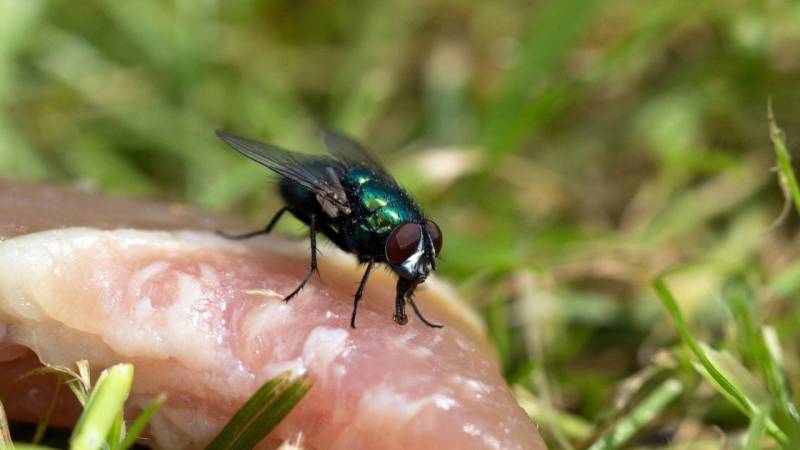
6. What does the blood look like?
When a wild animal collides with a car, it's a big impact. Imagine hitting a 160 kilogram deer at 80 km/h.
That's a serious accident, and probably bloody.
Look at the blood on the road and on the animal. If it's fresh, the animal hasn't been dead long. If it's heavily dried, the animal has been dead longer.
7. What does the meat look like?
You can also tell how long the animal has been dead by looking at the meat.
Has the color or consistency of the meat changed? Has it become slimy? Does it look fresh and red?
If I don't notice any concerning changes in the organs, I would then take a closer look at the meat.
I cut out a piece and pull the tissue apart. If it's slimy, frayed, smells or looks disgusting, then it's no good.
If it's red, dry, and firm, it's probably okay.
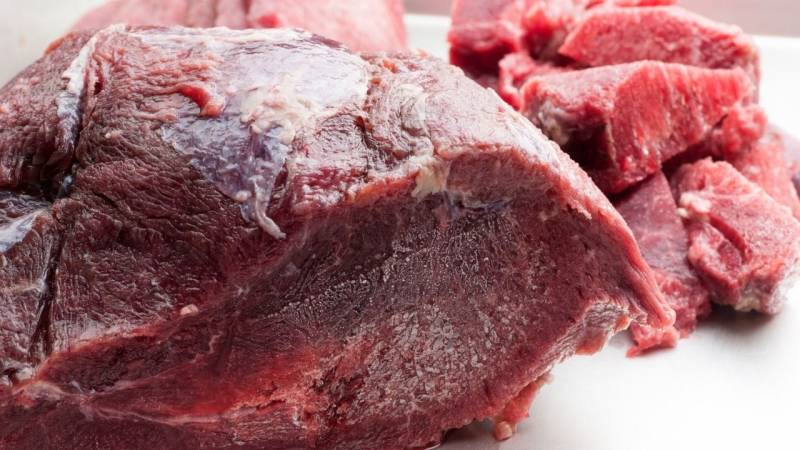
8. What is the climate like in your region?
The climate in the region plays a big role. In sub-zero temperatures, an animal lasts longer and is therefore still edible. Flies that lay their eggs on the animal are not present in winter.
If you see a deer by the roadside when the outside temperature is 30 °C, consider it to be spoiled.
9. Is the animal still usable?
Injuries after an accident are not always visible externally. The internal organs may be so severely damaged that the wild animal is no longer usable.
A rupturing gall bladder can make the whole meat inedible. Or the intestines exploded, emptying themselves throughout the body and contaminating the meat.
Note: Not every animal has a gallbladder. All antler carriers (Cervidae), such as roe deer, red deer, fallow deer and sika deer, do not have a gallbladder.
How do hunters handle it? What does hunter Tobias Wirtz say about it?
"After shooting a wild animal, the internal organs such as the heart, lungs, liver, spleen, kidneys and offal (stomach and intestines) are carefully examined. The hunter pays attention to suspicious features, such as tumors and abscesses in internal organs or muscles. The hunter also pays attention to deviations in the color, consistency, or smell of muscles or organs, as well as adhesions and adhesions of organs."
"In addition, the organs are checked for endoparasites (internal parasites). These can be large or small lung worms or stomach and intestinal worms, for example. We also look for tapeworms and their fins, as well as the large or small liver fluke."
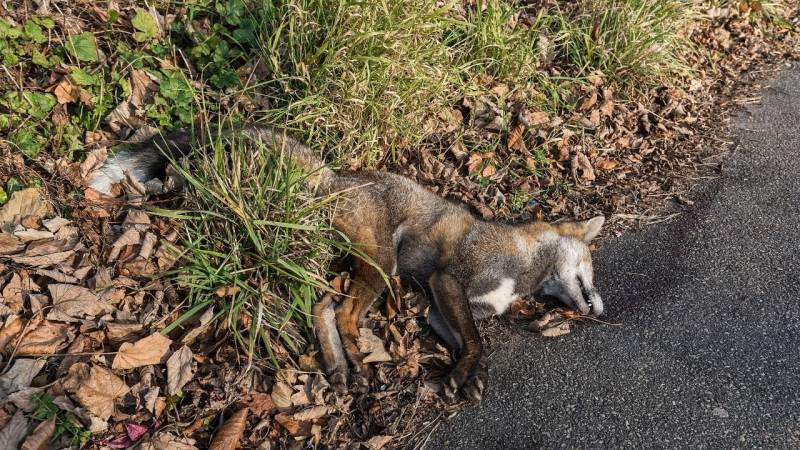
Is it allowed to take away animals that have been run over?
You've probably been waiting for this question, right?
Let's consider the legal side and assume you're not in a survival situation.
Look, there were more than 237,760 accidents with wild animals in Germany in 2020.
In addition, there are likely tens of thousands of wildlife accidents that authorities never become aware of despite being required to report them.
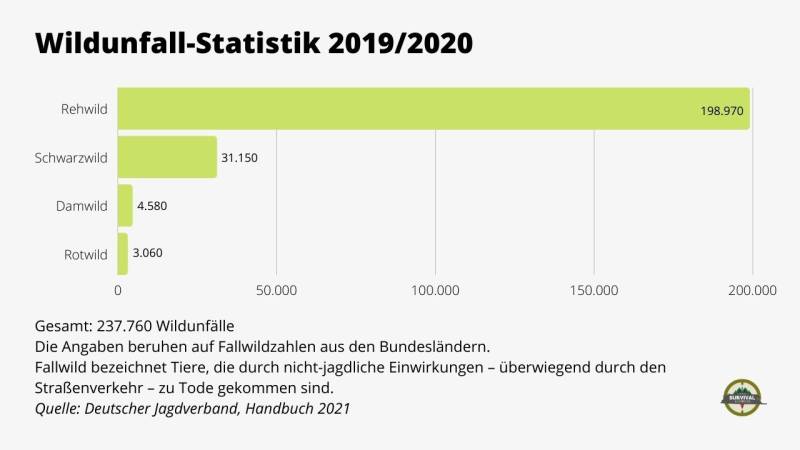
Now let's get to the answer.
Can you take roadkill in Germany?
I asked Tobias Wirtz, a hunter, this question:
"Anyone who takes possession of a wild animal violates someone else's hunting rights or hunting exercise rights and commits poaching, which can result in imprisonment or a fine."
In Germany, taking possession of injured wildlife falls under poaching, according to § 292 StGB. The penalty can be up to 3 years in prison or, in particularly severe cases, up to 5 years.
Why is this so?
Here, property rights come into play.
In a hunting area, wildlife is ownerless, or "free". When a wild animal is shot or hit by a vehicle, the right to appropriate it takes effect. This right belongs initially only to the landowner.
However, since the landowner usually leases the hunting rights, only the lessee is allowed to appropriate the wildlife.
If you are not the hunter in the hunting area where the animal was hit, you are not allowed to take it with you.
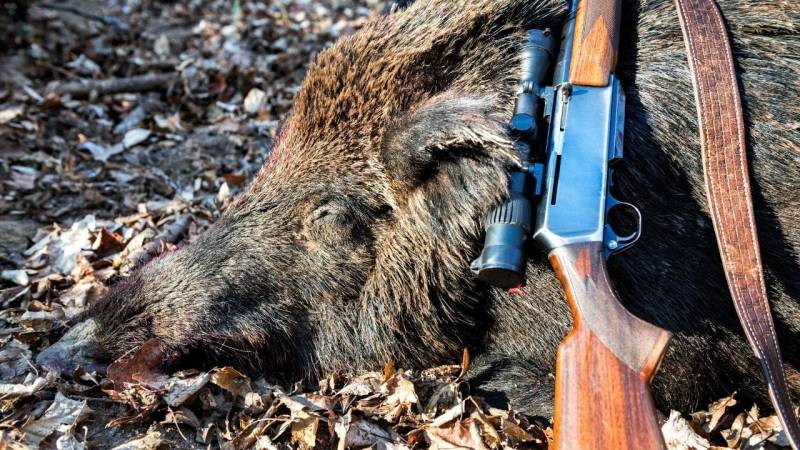
Can I sell or give away an injured wild animal I found on the road?
Only a hunter is allowed to take an injured wild animal and eat it. Selling it, i.e., putting it on the market, is not permitted.
This is regulated by the next law:
The "Regulation on Requirements for Hygiene when Manufacturing, Treating, and Marketing Certain Animal-Origin Foods" (short: Animal-Origin Food Hygiene Regulation - Tier-LMHV, read it here).
Section 22, Prohibitions and Restrictions, states:
It is forbidden to market:
- Meat from cloven-hoofed animals, poultry, rabbits, or breeding birds that were not killed by slaughter,
- Meat from large or small game that was not killed by hunting.
Different regulations in the USA
As an example: Some states in the USA allow taking and eating roadkill.
This includes deer, bears, elk, raccoons, or foxes.
In England and Australia, it is also common to use roadkill.
Can you get sick from eating roadkill?
Generally, you should assume that you cannot eat roadkill. Until proven otherwise.
There are essential factors to consider, such as:
- Is insect infestation present?
- Are visible larvae present?
- Did the animal have any diseases?
- How long has it been dead?
If you don't thoroughly check the animal, you are gambling with the risk of poisoning yourself.
However, if you examine it thoroughly and minimize all risks, you can probably eat it.
But please heat the meat well, minimizing any risks. In Germany, for example, it is regulated like this:
In Germany, there is a basic obligation to test for trichinosis in wild animals such as wild boars, badgers, nutria (coypu) and other carnivorous animals that can be carriers of trichinosis if the meat is to be used for human consumption.
Trichinosis is a genus of tiny parasitic nematode worms. This disease is incurable. Therefore, always remember (even in a survival situation) to start a fire and cook the meat thoroughly.
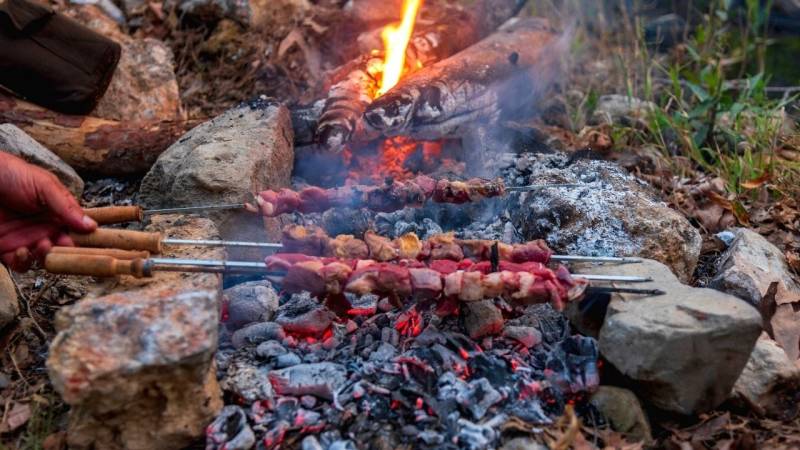
Is it morally wrong to eat a wild animal killed in a traffic accident?
Here's what PETA, the largest animal rights organization in the world, says about it:
If people must eat animal carcasses, roadkill is a superior option to the neatly shrink-wrapped plastic packages of meat in the supermarket.
PETA, source
As reported by PETA, consuming roadkill is possibly one of the most ethical ways of consuming meat. Furthermore, wild animals are healthier as compared to farm animals.
"Roadkill" is healthier than meat that is stuffed with antibiotics, hormones, and growth stimulants - as most of the meat is today.
It is also more humane that animals killed in the street were not castrated or dehorned without being anesthetized. In addition, they are spared the misery of transport in an overcrowded truck. They also do not hear the cries of their fellow creatures. They may never have experienced fear and could lead a peaceful life.
To eat or not to eat?
There are people who have been eating wild animals killed on the street for a long time. And they surely have knowledge about dead animals and are experienced gatherers.
However, as a layman, you should not assume that you can immediately recognize a healthy dead wild animal.
Instead, it is advisable to examine the animal very carefully. Become the Sherlock Holmes of wildlife accidents. Look at the animal, smell it and make sure it is a healthy animal.
Furthermore, it is necessary to evaluate the influence of climate, temperature, insects, and the condition of the body.
And in the end, you still need to educate yourself on the legal regulations depending on your location.
Would you eat roadkill? How do you feel about utilizing the meat?


Author of the guide
Martin Gebhardt
Hey, I'm Martin. On my blog, you will learn the basics and numerous details about living in the wild. I think survival, bushcraft and the good life in nature are the keys to happiness. Find me here on Instagram or on YouTube. You can find more about my mission on the About Me page.
Was this guide helpful?
40 people found this guide helpful.
4.40 out of 5 points (47 Ratings)
Comments (0)
This post may contain affiliate links. So if you click on the links and make a purchase, I will receive a small commission at no additional cost to you. Click here, to learn more about it.



